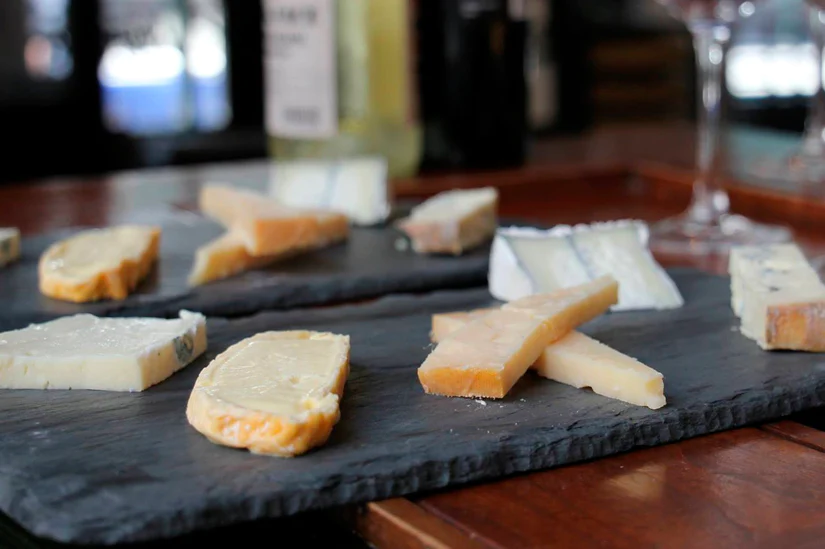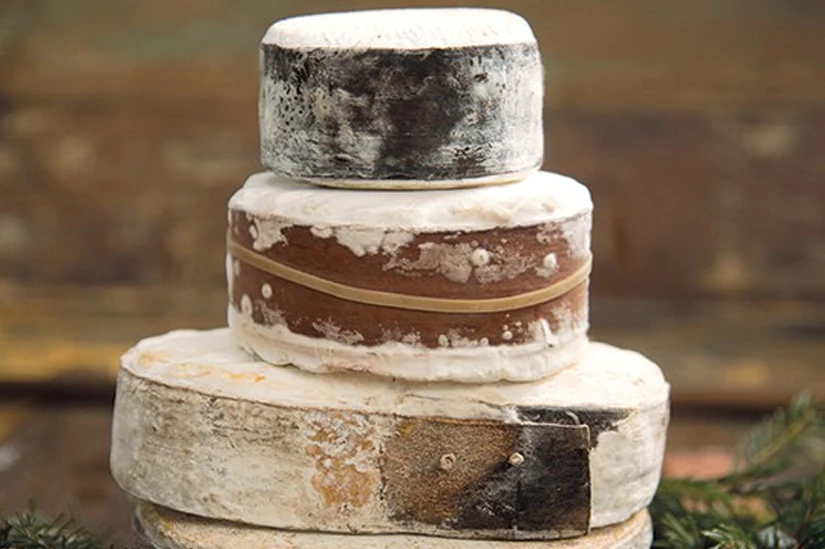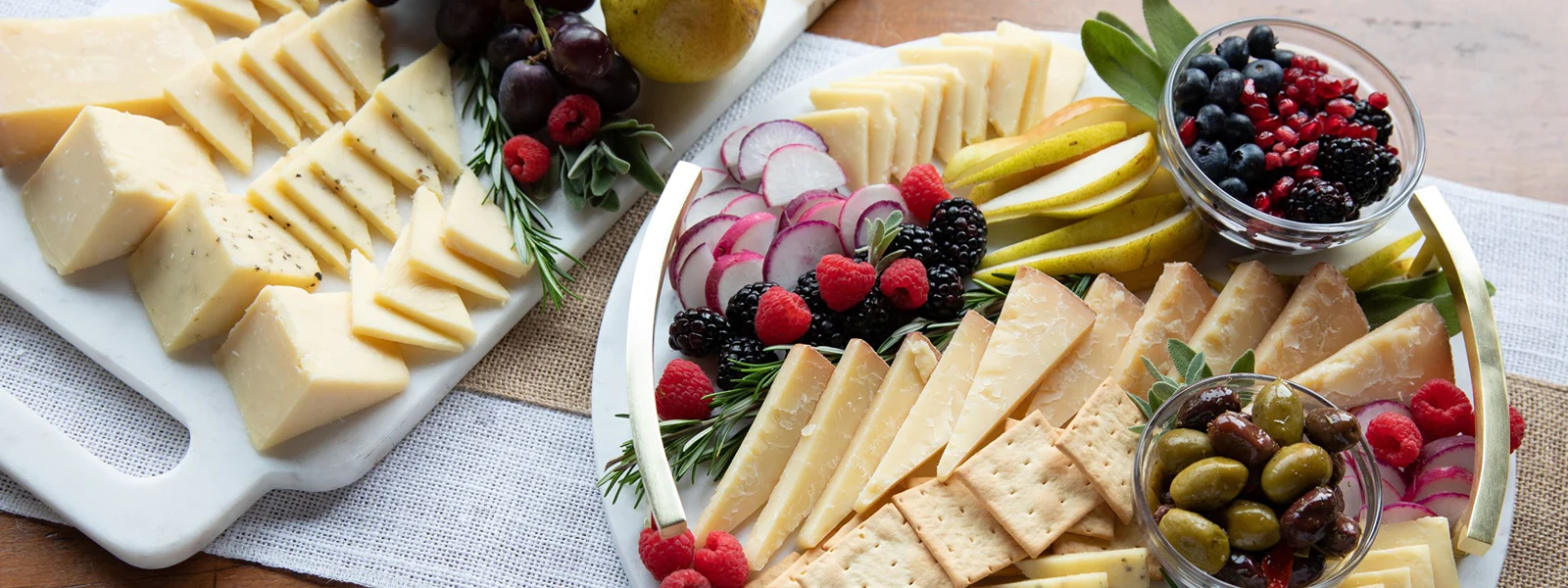Part of the magic of cheese is the cheese rind that the artisan selects as part of the cheese’s identity. There are many types of cheese rinds classified differently throughout the world of cheese: clothbound, natural rind, leaf wrapped, waxed, bloomy, washed, flavored, and more.

At its most basic purpose, the rind on the cheese protects the inside (paste) of the cheese. In addition to this, most rinds play a crucial part in the flavor profile of the cheese and continues to develop flavor throughout the aging process. Regardless of how it tastes or feels, the rind is always safe to eat, but some are more desirable than others depending on the age and style of the cheese. Bottom line: If the rind tastes good to you… then eat it!
Clothbound cheese (or bandaged wrapped) is used in traditional cheddar-style cheese, where its wrapped in a cheese cloth, rubbed with butter (or lard) and aged. The butter encourages good mold growth creating robust flavors with a crumbly texture. The cloth is tough so you’ll want to stay away from eating it. Good news! Cheesemongers usually remove the cloth before the sell the cheese, but always double-check before taking that first bite.

You’ll also find cheeses where the cheesemaker has wrapped the cheese in tree bark or grape leaves, adding earthy flavors and aroma. Cheese may also be brushed or dipped in wax to preserve and protect it during affinage. Although safe to eat, we don’t recommend eating these rinds.
One of the great cheese plate conundrums is whether or not the rind is safe to eat on brie-style cheese. The answer is a resounding yes! Also know as soft-ripened, the bloomy, powder-white rind is crisp, acidic and clean when young and becomes savory and ammoniated as it ripens. If you open a more mature bloomy-rind cheese and smell ammonia, simply let it air out a little. This smell will often dissipate, depending on the age of the cheese. A sweet, fruit preserve can make the aged rind a bit more palatable when it’s past prime.
Stinky cheese anyone? Eww! Hey, “Don’t yuk my yum.” The aroma on a washed rind cheese will catch your nose’s attention, but the taste is usually not as strong. The reddish-orange color often comes from Brevibacterium (B-linens), a type of good bacteria. With meaty flavors of broth, beef, and sometimes notes of smoked bacon, washed rind cheese can be some of the most interesting to taste.
Natural rinds organically form on a cheese displaying a variety of colorful molds. And for flavored and marinated rinds, the cheesemakers season the outside of the cheese with ingredients like sea salt, paprika, rubs, pepper, coffee, chocolate, honey, wine, beer, bourbon … the list is endless! These are designed to eat so have fun and be a little adventurous in your cheese journey.
Regardless of the rind on your cheese – do not be afraid! This a fun part of the cheese-eating process and designed to bring even more flavor enjoyment to your cheese.
For more information about cheese rinds, click here.


